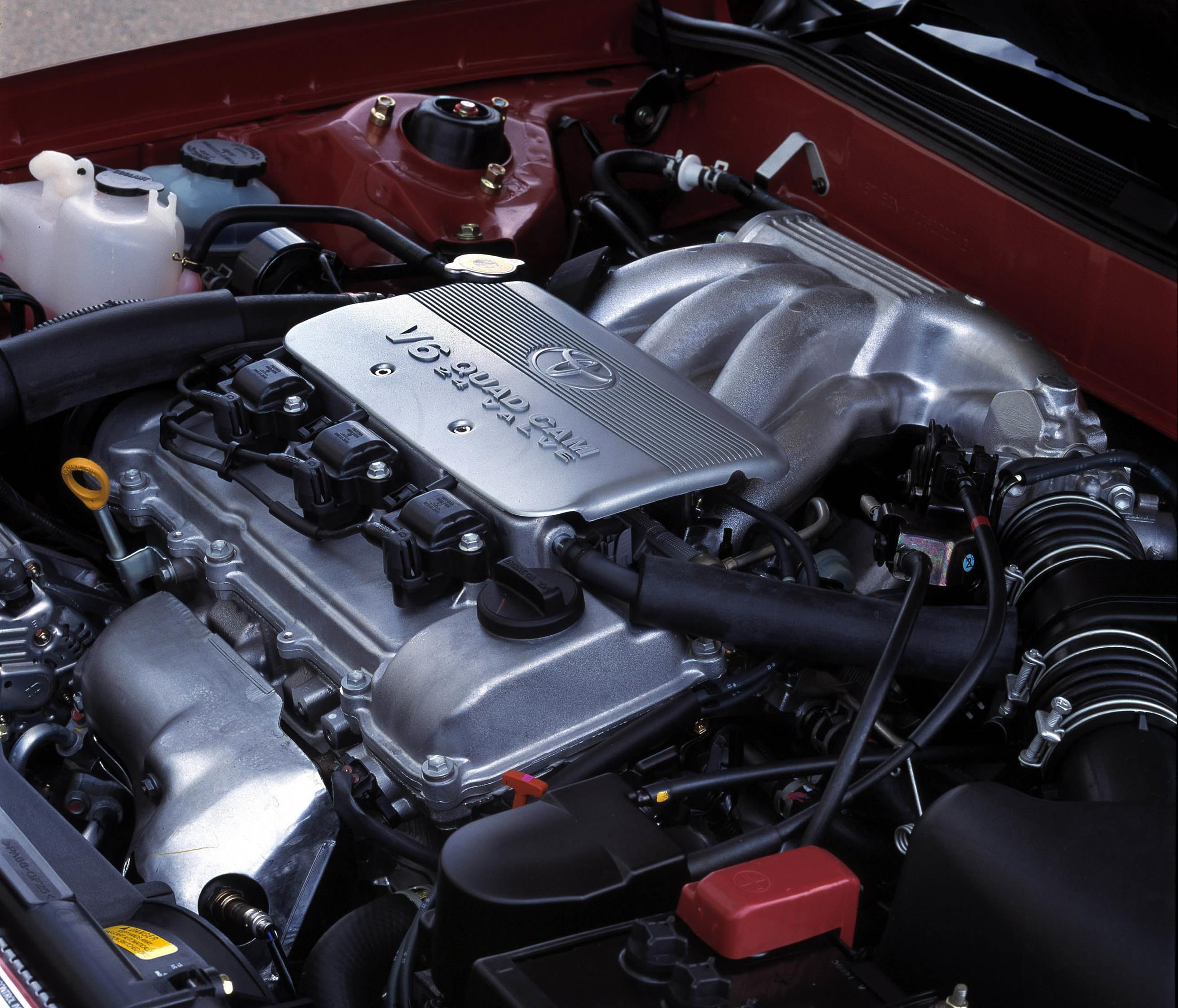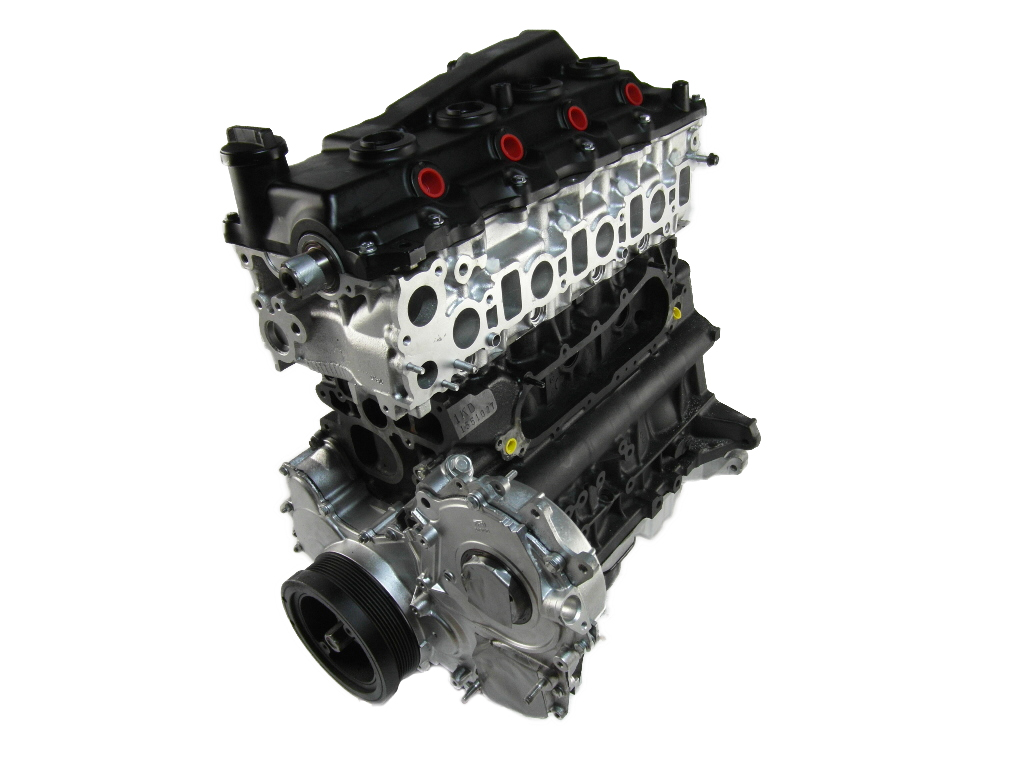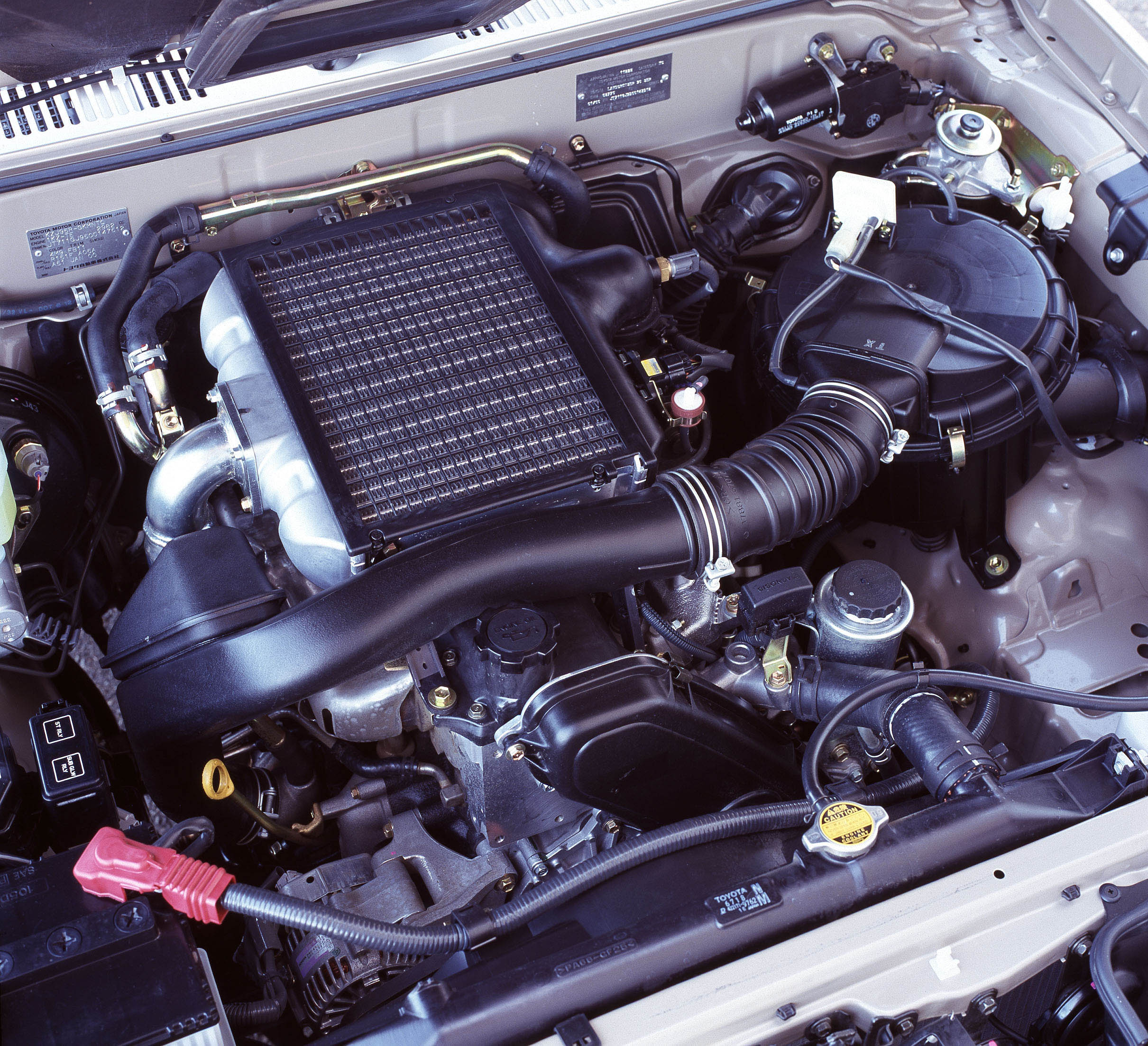 Introduction
Introduction
The 4GR-FSE was a 2.5-litre V6 petrol engine that was first introduced in Australia in the Lexus XE20 IS 250. A member of the Toyota/Lexus GR engine family, key features of the 4GR-FSE engine included its aluminium alloy block and cylinder head, direct fuel injection, and variable intake and exhaust valve timing (‘dual VVT-i’).
The 4GR-FSE engine had a service weight of 180 kg.
| Engine | Trans. | Years | Peak power | Peak torque | |
|---|---|---|---|---|---|
| Lexus XE20 IS 250 | 2.5-litre petrol V6 | 6sp man., 6sp auto |
2005-13 | 153kW at 6400rpm | 252Nm at 4800rpm |
| Lexus XE20 IS 250 Convertible | 2.5-litre petrol V6 | 6sp auto | 2009-14 | 153kW at 6400rpm | 252Nm at 4800rpm |
| Lexus L10 GS 250 | 2.5-litre petrol V6 | 6sp auto | 2012-on | 154kW at 6400rpm | 253Nm at 4800rpm |
| Lexus XE30 IS 250 | 2.5-litre petrol V6 | 6sp auto | 2013-on | 153kW at 6400rpm | 252Nm at 4800rpm |
4GR-FSE block
With its cast aluminium alloy cylinder block, the cylinder banks of the 4GR-FSE engine had a 60-degree ‘V’ angle. The 4GR-FSE engine had 83.0 mm bores and a 77.0 mm stroke for a capacity of 2500 cc. The 4GR-FSE engine had ‘spiny type’ cast-iron cylinder liners – the casting exteriors of these liners had irregular surfaces to enhance the adhesion between the liners and the aluminium cylinder block.
Crankshaft, connecting rods and pistons
Like the 3GR-FSE, the 4GR-FSE engine is understood to have a forged steel crankshaft, sintered forged steel connecting rods and hypereutectic aluminium alloy pistons for tighter skirt clearances than a forged piston (to avoid cold-start piston slap). In addition to strength, the hypereutectic piston improved resistance to scuffs and seizure, and generally operated at cooler temperatures.
Cylinder head
The 4GR-FSE engine had an aluminium alloy cylinder head in which the two-piece heads were divided at the cam journals. The cylinder head used a two-layer metal type head gaskets; shims were also used around the bores for sealing and durability. For the 4GR-FSE engine, aluminium alloy cylinder head covers were tightened to the cylinder heads by fixed-dimension flanges.
Camshafts
The 4GR-FSE engine had double overhead camshafts that were made of alloyed cast iron and had induction hardened cams. The two-stage chain system consisted of a primary chain that enabled the crankshaft to drive the right and left intake camshafts, and a secondary chain that enabled the intake camshafts to drive the exhaust camshafts. Both the primary and secondary timing chains consisted of high-strength single-row roller chains and compact sprockets
The primary chain used a check ball-type chain tensioner with a ratchet mechanism that used both engine oil pressure and spring force. The secondary chain used a compact tensioner that directly pushed on the chain by engine oil pressure and a spring force.
Roller rockers
The 4GR-FSE engine had roller rocker arms with integrated needle bearings that reduced the friction that occurred between the camshafts and the roller rocker arms (which actuated the valves). The hydraulic lash adjusters – positioned at the fulcrum of the rocker arm at the opposite end of the valve – were used to eliminate the gap (clearance) between the cams and rocker arms.
Valves and VVT-i
The ‘dual variable valve timing – intelligence’ (dual VVT-i) system in the 4GR-FSE engine could independently vary inlet timing across a range of 40 degrees (relative to crankshaft angle) and independently vary exhaust valve timing over a range of 35 degrees. To utilise exhaust pulsations for better cylinder filling at high engine speeds, the dual VVT-i system could vary the range of valve overlap from -3 to +72 degrees. Furthermore, the inlet camshafts had 244 degrees of duration and the exhaust camshafts had duration of 240 degrees. These ranges were the same as the 3GR-FSE engine.
| 4GR-FSE Dual VVT-i: Valve Timing | ||
|---|---|---|
| Intake | Open | -6° to 34° BTDC |
| Close | 70° to30° ABDC | |
| Exhaust | Open | 57° to 22° BBDC |
| Close | 3° to 38° ATDC | |
- An oil control valve (mounted on the cylinder head); and,
- Vane-type actuators on the ends of the four camshafts. The intake side used a VVT-i controller with three vanes, and the exhaust side used one with four vanes.
The ECU also used signals from the camshaft position sensor and the crankshaft position sensor to detect actual valve timing, thus providing feedback control to achieve the target valve timing. When the engine stopped, the intake side VVT-i controller was locked on the most retarded angle side by the lock pin, and the exhaust side VVT-i controller was locked on the most advanced angle side.
Intake
For the 4GR-FSE engine, the intake air chamber was made of plastic and contained an intake air control valve for Toyota’s ‘Acoustic Control Induction System’ (ACIS). ACIS consisted of:
- A bulkhead to divide the intake manifold into two stages; and,
- An intake air control valve in the bulkhead which opened and closed to vary the effective length of the intake manifold according to engine speed and throttle valve opening angle.
When the engine was running at medium speeds under high load, an actuator would close the intake air control valve to increase the effective length of the intake manifold and improve intake efficiency – at medium engine speeds – due to the effect of inlet pulsations. In any condition other than middle speed running under high loads, the intake air control valve was open to shorten the effective length of the intake manifold.
The 4GR-FSE engine had a thin-wall cast aluminium inlet manifold. To increase air turbulence within the combustion chamber, the 4GR-FSE engine had high-tumble inlet ports whereby cut-outs in the wall of the intake port – opposite the valve guide – helped promote a swirl pattern inside the cylinder.
The 4GR-FSE also used Swirl Control Valves (SCVs) – a butterfly valve in one of each pair of inlet ports – that closed at low engine temperatures and low engine speeds. The purpose of the SCVs was to:
- Stabilise combustion while the water temperature was low; and,
- Provide open-close control for higher torque outputs at low engine speeds.
The SCVs on the right and left banks were connected with a linkage mechanism that both SCVs to be actuated with a single motor.
D-4 (Direct injection 4-stroke gasoline engine)
The 4GR-FSE engine had a direct injection system whereby a low-pressure fuel pump located inside the fuel tank supplied fuel to a high-pressure fuel pump in the cylinder head cover. It is understood that the high pressure pump then delivered the fuel to the injectors at pressures between 4 and 13 MPa (the same as the 3GR-FSE). The direct injection system controlled fuel injection timing and volume, the air:fuel ratio and throttle valve position.
With direction injection, fuel was injected directly into the combustion chamber at high pressure to improve combustion efficiency and reducing pumping losses. Since direct injection enhanced the cooling effect of intake air as it entered the cylinder, it increased charging efficiency and resistance to engine knock (detonation). In turn, the resistance to engine knock (detonation) allowed for a higher compression ratio, improving power and torque across engine speeds.
The injectors for the 4GR-FSE had a single-orifice, high-pressure slit nozzle design. Because the injector was exposed inside the combustion chamber, a special coating was applied to prevent the adhesion of carbon deposits created by the combustion gas. Furthermore, an insulator was used in the area in which the injector came into contact with the cylinder head, and a Teflon shaft seal was used for sealing the injector against cylinder pressure.
The high-pressure slit nozzle injector ‘atomised’ fuel into a fine mist while dispersing it to form a large, fan-shaped pattern in the combustion chamber – this occurred as the downstroke of the piston drew in a large volume of air (the expansion stroke). The D-4 system had the following operating modes:
- For faster warm-up of the catalytic converter on cold starting, the engine used lean-burn control through weak stratification combustion. In weak stratification combustion, fuel was injected during the latter half of the compression stroke to raise the combustion temperature;
- At light engine loads, a stratified charge created an area of rich mixture near the spark plug – so that it would ignite easily – and a leaner mixture in the combustion chamber extremities; and,
- At high engine loads, fuel was injected during the first half of the intake stroke to create a more homogeneous air-fuel mixture (homogeneous combustion). By utilising the heat of evaporation of the injected fuel to cool the compressed air, the engine increased its charging efficiency.
Ignition
The 4GR-FSE was fitted with the Toyota/Lexus Direct Ignition System (DIS) whereby an ignition coil with an integrated igniter was used for each cylinder. The 4GR-FSE engine used long-reach, triple ground electrode type spark plugs which had an iridium alloy in their centre electrodes (Denso FK20HBR11). To enhance combustion efficiency and knock resistance, the spark plugs were located in the centre of each combustion chamber. Intake air mass was measured using a hot-wire type mass airflow meter with a built-in intake air temperature sensors.
The combustion chambers had a pentroof design and a ‘slanted squish’ shape for a low surface-to-volume ratio, thereby reducing cooling losses. The 4GR-FSE engine had a compression ratio of 12.0:1 and firing order of 1-2-3-4-5-6.
Exhaust
The stainless steel exhaust manifold for the 4GR-FSE engine had dual-pipe construction with integrated three-way catalytic converters. A ball joint mechanism was used to join the front pipe to the tail pipe to absorb the vibration of the engine and exhaust pipe, while dual main mufflers were used to reduce back pressure.
 Introduction
Introduction

